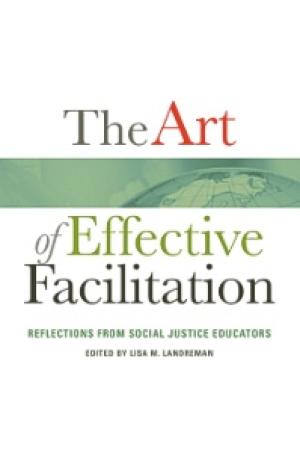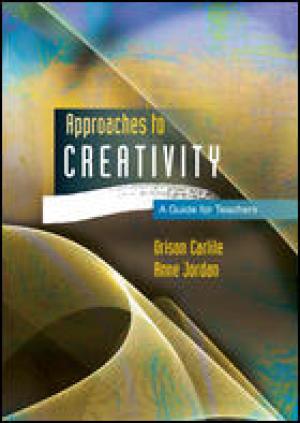Resources
Excerpts from a post by Marilla Svinicki of University of Texas at Austin for the National Teaching and Learning Forum. Discusses some of the benefits of flipped classrooms. Argues that the flipped classroom is not easy or new. Hosted on Stanford University's Teaching Commons.
Blog post that describes an alternative approach to classroom discussion/debate. Students are not asked to debate but to repeat back the position of their opponents. Then, students are asked to reach a consensus position together.
Researched by J. Prusch and written and adapted by A.M. Pickett. Gives 50 alternatives to lecture for teaching online courses. Examples include: conduct an interview; invite a guest speaker; and student-led discussion. Alternatives could be adapted for face-to-face teaching.
Provides brief instructions on 13 different classroom discussion formats and activities. Examples include: circle of voices, critical debate, and jigsaw.
This piece concerns "public work" in the sense of student assignments taking place outside the classroom or a closed Learning Management System. It is in the form of a Storify of a Twitter chat that took place March 26, 2012.
Service-Learning is an engaged pedagogy, premised on experiential education as the foundation for intellectual, moral, and civic growth

Click Here for Book Review Abstract: How can I apply learning and social justice theory to become a better facilitator? Should I prepare differently for workshops around specific identities? How do I effectively respond when things aren’t going as planned? This book is intended for the increasing number of faculty and student affairs administrators – at whatever their level of experience -- who are being are asked to become social justice educators to prepare students to live successfully within, and contribute to, an equitable multicultural society. It will enable facilitators to create programs that go beyond superficial discussion of the issues to fundamentally address the structural and cultural causes of inequity, and provide students with the knowledge and skills to work for a more just society. Beyond theory, design, techniques and advice on practice, the book concludes with a section on supporting student social action. The authors illuminate the art and complexity of facilitation, describe multiple approaches, and discuss the necessary and ongoing reflection process. What sets this book apart is how the authors illustrate these practices through personal narratives of challenges encountered, and by admitting to their struggles and mistakes. They emphasize the need to prepare by taking into account such considerations as the developmental readiness of the participants, and the particular issues and historical context of the campus, before designing and facilitating a social justice training or selecting specific exercises. They pay particular attention to the struggle to teach the goals of social justice education in a language that can be embraced by the general public, and to connect its structural and contextual analyses to real issues inside and outside the classroom. The book is informed by the recognition that “the magic is almost never in the exercise or the handout but, instead, is in the facilitation”; and by the authors’ commitment to help educators identify and analyze dehumanizing processes on their campuses and in society at large, reflect on their own socialization, and engage in proactive strategies to dismantle oppression. (From the Publisher)

This book offers an accessible introduction and a comprehensive guide to a range of ideas on creativity in education. The book provides an overview of the major theories related to creativity and explores the implications for policy and practice. The popular topic of creativity has given rise to a large number of theoretical positions, sometimes contradictory or contested. This book clarifies and organises these approaches so that teachers understand where particular pedagogical and curricular practices originate and can develop them coherently. Topics covered include: Creativity in a social context Creativity and technology Creativity and curriculum planning Assessment and creativity Group creativity Managing creativity Tools of creativity The creative learner Creativity and cognition Creativity as expression Approaches to Creativity is an invaluable resource for those who wish to reflect on creativity and explore and engage in the modern discourse of education. It will be of value in teacher education, postgraduate studies, curriculum design and administration. (From the Publisher)
This essay argues that multifaith concerns must become central components of curricula across theological education. It outlines a methodology for such incorporation in a course and for an audience that, at first glance, appears not to lend itself to such an approach, a Hartford Seminary course on Muslim public speaking for Islamic Chaplaincy students. This methodology is based on the model of educational programs developed by the Interfaith Center of New York for local religious leaders and professionals who work with and within religiously diverse settings, such as school teachers, court officials, health care professionals, and social workers. This model of practical multifaith education is based on the local realities of religious diversity that constitutes the context for the work of graduates of theological schools.
The author and her colleagues planned and led three retreats to build relationships between rabbinical students and Muslim leaders of tomorrow. Narrative Pedagogy served to inform the creation of these immersive experiences. The retreats made use of the shared scriptural traditions around Joseph (Torah) and Yusuf (Qur'an) to build connections based on a common passion for text study. Parallel to the academic exploration of religious and cultural narratives, participants wove connections based on an ethos of appreciative inquiry and the guided sharing of personal stories. Carefully structured exercises provided a container for the growth of understanding and connection.